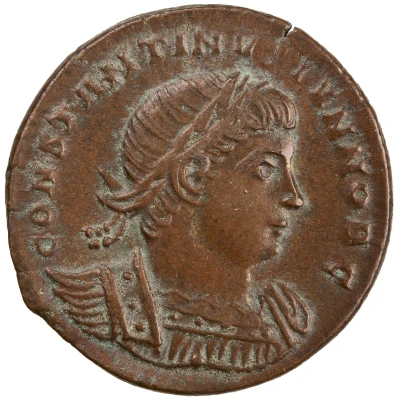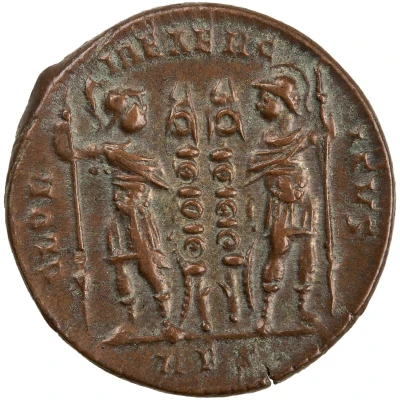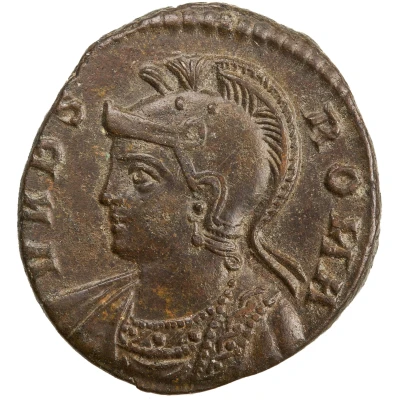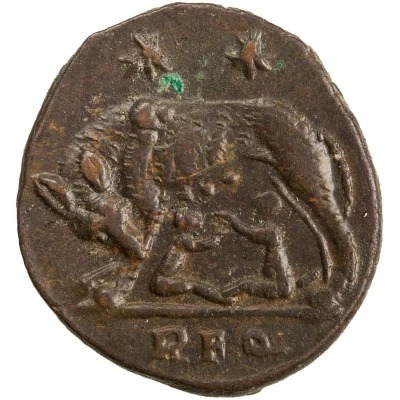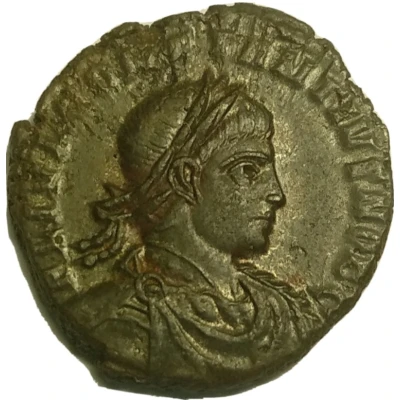
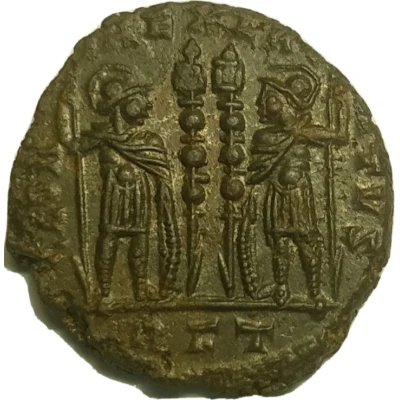

© Trizard
Nummus - Constantius II GLORIA EXERCITVS; Roma
330 year| Bronze | 2.99 g | 18 mm |
| Issuer | Rome › Roman Empire (27 BC - 395 AD) |
|---|---|
| Emperor | Constantine I (Flavius Valerius Constantinus) (306-337) |
| Type | Standard circulation coin |
| Year | 330 |
| Value | Nummus (1⁄7200) |
| Currency | Solidus, Reform of Constantine (AD 310/324 – 395) |
| Composition | Bronze |
| Weight | 2.99 g |
| Diameter | 18 mm |
| Thickness | 1.7 mm |
| Shape | Round (irregular) |
| Technique | Hammered |
| Orientation | Variable alignment ↺ |
| Demonetized | Yes |
| Updated | 2024-10-05 |
| Numista | N#230888 |
|---|---|
| Rarity index | 87% |
Reverse
Two standing, helmeted soldiers, each holding a haste and leaning on their shield; between them, two military ensigns.
Script: Latin
Lettering: GLORIA EXERCITVS
Interesting fact
One interesting fact about this coin is that it features the first Christian symbol, the Chi-Rho, on its reverse side. The Chi-Rho is a combination of the first two letters of the Greek word "Christos" (Χριστός), which means "Christ." This symbol was used by Emperor Constantine, who ruled from 306 to 337 AD, as a symbol of his Christian faith and to promote Christianity throughout the empire. The presence of the Chi-Rho on this coin indicates that it was minted during Constantine's reign and reflects the spread of Christianity during that time.
